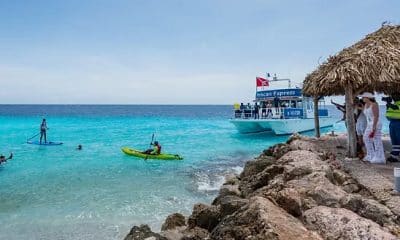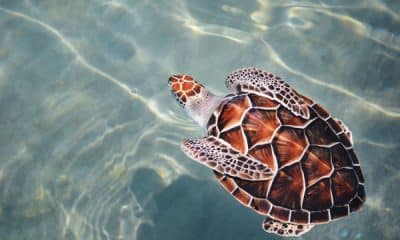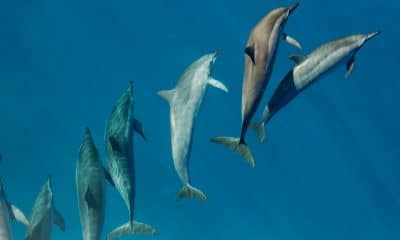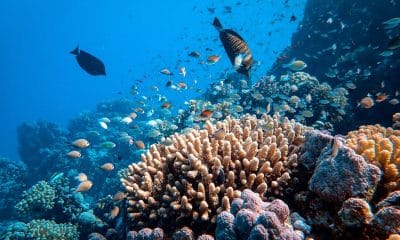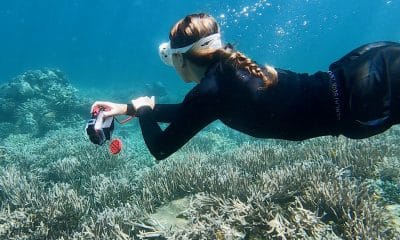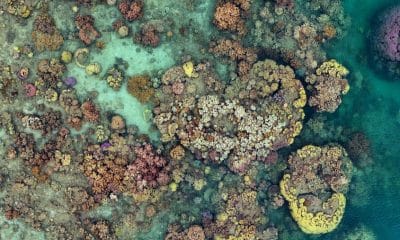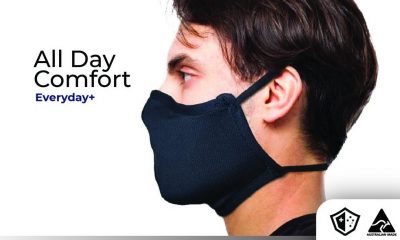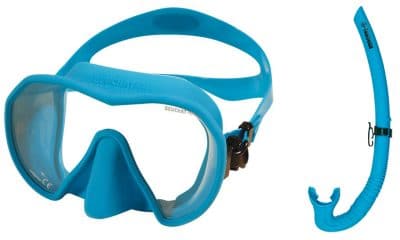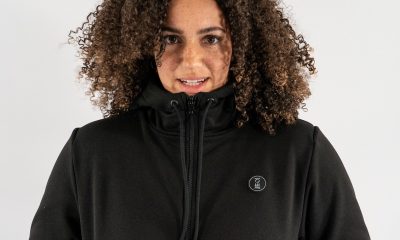Blogs
Snorkeling vs. Freediving – What’s the difference?
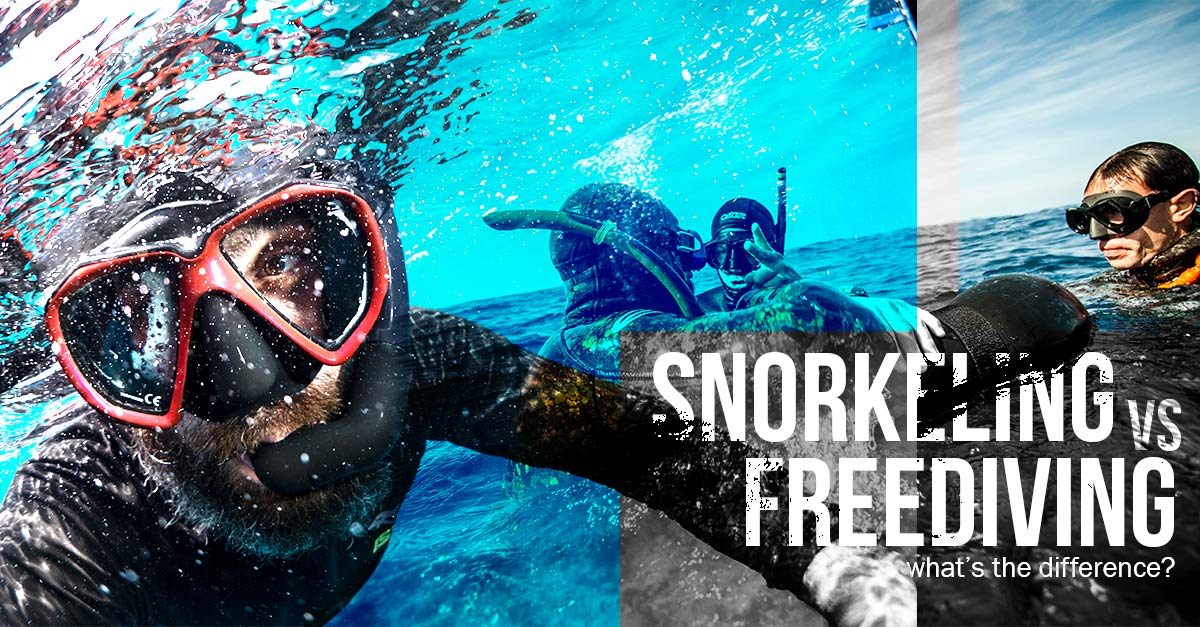
Being in the water with just mask, snorkel and fins is all the same, right? Not quite. There are three ways in which you can enjoy the water using minimal equipment. These are snorkeling, skin diving and freediving. What are the differences? I’m glad you asked.
Snorkeling
First, we will cover the simplest form – snorkeling. To enjoy snorkeling you must have a mask, snorkel and, possibly, fins. Without these, you’re just swimming.
You need a mask to see underwater. A snorkel makes it possible to breathe without lifting your head. The remaining equipment is optional. Some things that might help you enjoy snorkeling more include:
- Comfortable, full-foot fins
- A rash guard or wetsuit to protect you from stings, abrasions, the sun and getting cold
- A snorkeling vest to increase your visibility and floatation on the surface
Once you have your gear, grab your buddies and hit the water. You can enjoy hours of snorkeling with minimal training. A good place to start is the Snorkeler course from Scuba Diving International (SDI).
Snorkeling is essentially swimming on the surface while breathing through your snorkel. Any dives you make will be brief and shallow — no more than 5 m/16 ft. This is like the deep end of a swimming pool.
Every day, millions around the world enjoy snorkeling. This includes:
- Families on vacation or at home on the lake
- Scuba divers between dives
- People who want this to be the extent of their in-water experience
Snorkeling courses are readily available almost anywhere snorkeling is popular. They help make snorkeling a safer and much more enjoyable experience.
Skin Diving
The sport of skin diving is the next level of diving without scuba. It gained popularity in the 1940s and 1950s, chiefly among soldiers and sailors coming home from overseas. Skin diving is generally more involved than snorkeling. It uses largely the same gear, but without the snorkel vest.
Skin divers typically go slightly deeper and stay somewhat longer than snorkelers. Hitting depths in the 5-10 m/16-33 ft range, skin dives generally last around 20-30 seconds. These are short dives to snap pictures of fish or perhaps collect dinner. In the past, many agencies required skin dives as part of the certification process.
Freediving
If snorkeling represents one end of a spectrum, freediving represents the other. It is significantly more complex both in terms of skill and risk.
People have been freediving for commerce and sustenance since the dawn of time. As one example, the Ama of Japan have been doing this for centuries.
There were many notable freediving pioneers including US Navy dive instructor Robert Croft, Jacques Mayol and Enzo Majorca. Breath-hold diving played a significant role in World War II with the USA, Italy, the UK and others employing freediving special operations troops. The legendary Jacques-Ives Cousteau was a freediver before inventing modern scuba with Emile Gagnan.
Modern competitive freediving traces its roots to 1949. This was when Hungarian-born Italian Air Force captain Raimondo Bucher won 50,000 lire by diving to a depth of 30 m/100 ft off Naples. Scientists predicted the pressure would crush Bucher’s lungs at this depth. They were wrong.
Today freediving is among the fastest-growing water sports. Although freediving has its competitive side, not all freedivers compete. Some spearfish. Some simply enjoy the activity.
Modern freedivers use highly specialized equipment. This includes:
- Long-bladed fins which provide exception propulsion
- Low volume masks which make equalizing easier
- Special wetsuits which are warmer and more flexible than those used by scuba divers
Instead of the inflatable buoyancy devices scuba divers use, freedivers weight themselves for neutral buoyancy at 10-20 m/33-66 ft. Doing so makes controlling buoyancy easier and helps ensure a safe return to the surface.
The threshold for freediving is a depth of 10 m/33 ft and bottom times exceeding 30 seconds. The risks involved are substantial. This is why not only proper equipment but proper training is essential.
Fortunately, you can get this training through Performance Freediving International (PFI), the world’s leading freediver training organization. Like SDI, PFA is a member of the International Training family. PFA offers a wide variety of courses from beginning freediver through instructor trainer.
Whether your interests tend toward snorkeling or freediving, SDI and PFI have the right course to get you started.
To find out more about International Training, visit www.tdisdi.com.
Blogs
The Suit Ocean Team leads the Ultimate Curacao Snorkeling Adventure
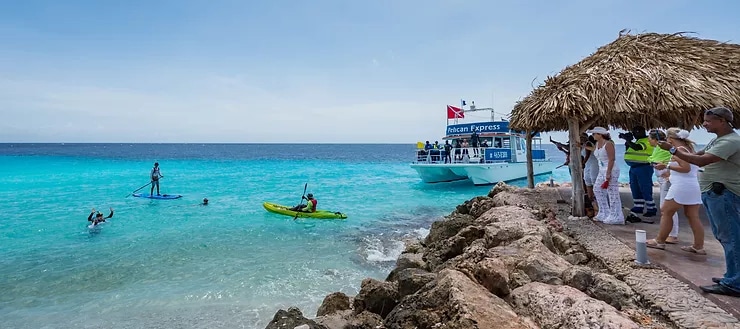
As passionate residents of our Dutch Caribbean Island, we must congratulate The Suit Ocean Team for creating more awareness about the importance of protecting our beautiful fringing reef systems in Curacao.
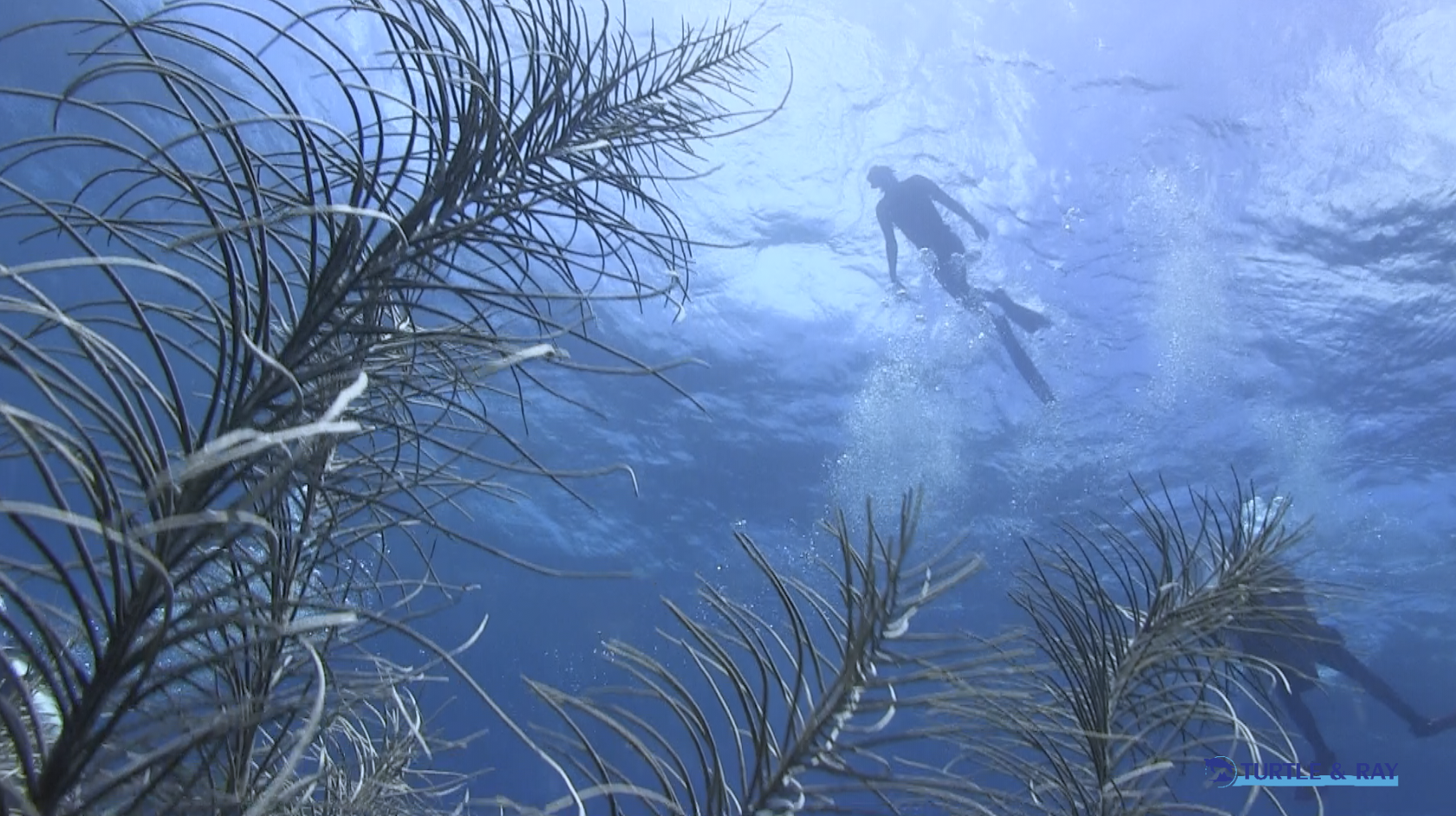
The film, Curacao Underwater Kunuku (Kunuku is Papiamento for Garden), not only documents this ultimate snorkeling adventure showing you how easy it is for everyone to access and enjoy a snorkel or diving experience, but it also showcases the interaction between man and nature, highlighting the beauty of underwater life while promoting conservation, preservation and the need to protect these vital habitats.
These are the key ingredients to this beautiful short film documentary. Watch NOW and please enjoy our “CURACAO UNDERWATER KUNUKU”.
This film, produced by the Lawrence Mensa Foundation (LMF), is also available in multiple languages including: Spanish, Papiamentu, Dutch, Portuguese and German.
Blogs
8 Unique Places to Go Snorkeling in Europe
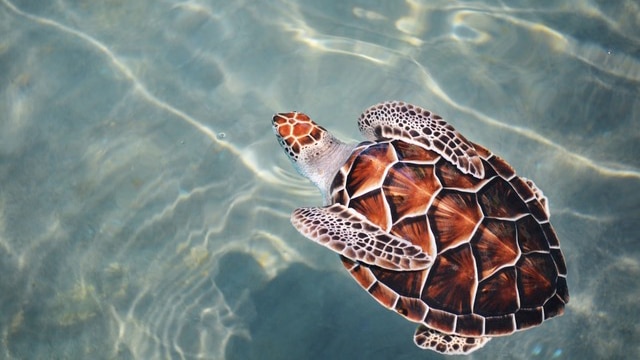
Snorkeling in Europe brings to mind golden sands dotted with beach umbrellas, clear waters, and rocky landscapes busy with Mediterranean fish life. Europe offers all of that, but it also offers so much more for snorkelers. Among Europe’s diverse countries, you can find impossibly bright blue lagoons, idyllic islands, and pristine marine reserves that host thousands of sea turtles and playful seals. You can snorkel over a sunken Roman city and explore one of the world’s premier marine megafauna hotspots. Ready for a summer vacation? Get inspired with our round-up of 8 unique places to go snorkeling in Europe.
Comino, Malta
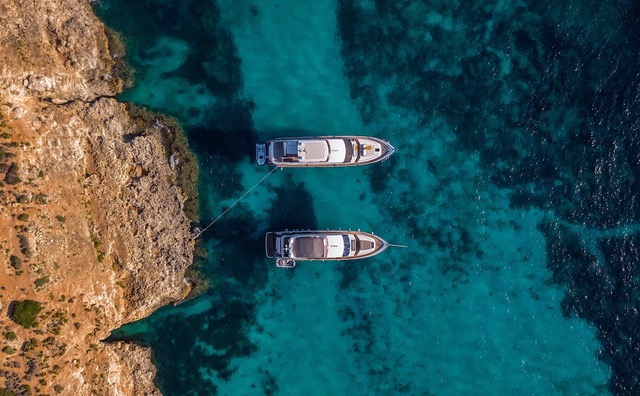
Sitting between the islands of Malta and Gozo, Comino Island is a paradise for snorkelers and divers alike. This tiny island hosts the brightest blue waters in the Maltese Islands and offers fantastic snorkeling among sheltered inlets and caves busy with diverse marine life.
Comino is best-known for hosting the Blue Lagoon; a bucket-list destination with crystal-clear waters and striking rocky landscapes. It is the perfect place to go snorkeling, take a hike, or simply marvel at the gorgeous scenery.
Medes Islands, Spain.
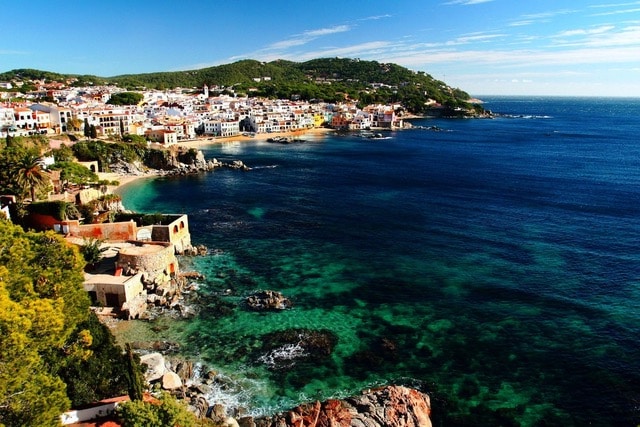
With over 500 dive sites and seaside destinations all along its coastline, Spain draws tourists from around the world. This vibrant country is one of Europe’s top vacation spots.
The Costa Brava in northeastern Spain is home to some of the most famous snorkeling spots in the country, one of which is the Medes Islands. This small archipelago of seven islets off L’Estartit is one of the best marine reserves in all of the Mediterranean.
Fishing was banned at the Medes Islands over 30 years ago, which has allowed marine life to flourish there. Seagrass meadows and rocky areas busy with fish await. A visit to this exceptional marine ecosystem is a must if you are visiting Spain.
Zakynthos, Greece.
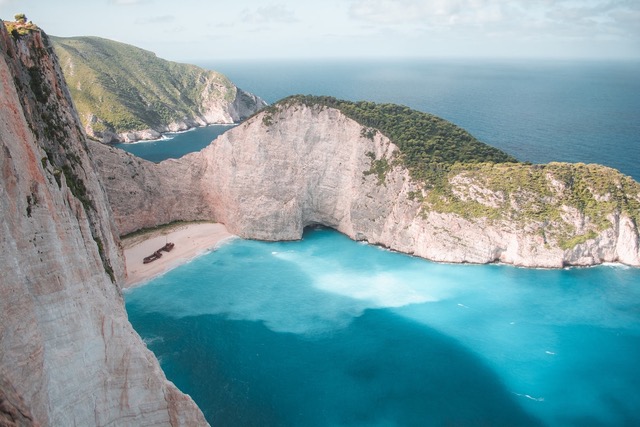
If you love sea turtles, Greece should be top of your list of places to go snorkeling in Europe.
Zakynthos is home to Marathonisi Island, also known as ‘Turtle Island’. This small island sits within the National Marine Park of Zakynthos and is a vital breeding ground for loggerhead sea turtles. The National Marine Park of Zakynthos was created in 1999 to protect these turtles, plus rare Mediterranean monk seals, which give birth to their young in Zakynthos’s secluded caves.
Marathonisi, nearby Cameo Island, and Zakynthos, are the top places in Europe to swim with turtles. In the summer months, thousands of loggerhead turtles visit the area to lay their eggs and you can go snorkeling with them.
Lundy Island, United Kingdom.
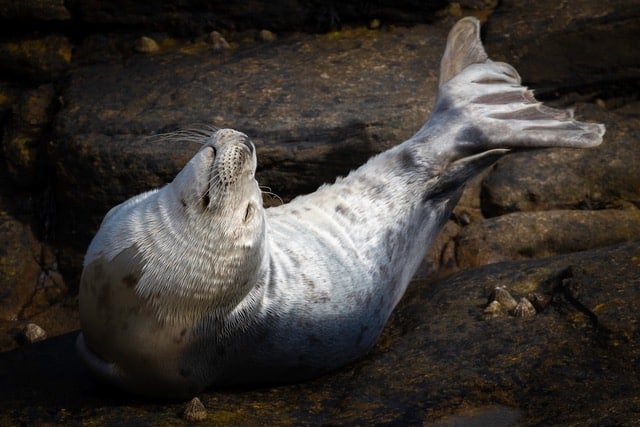
Snorkeling with seals is bound to leave a smile on your face. These cheeky animals are known for getting up close to snorkelers, checking them out, and occasionally nibbling fins.
Lundy Island is one of the best places to go snorkeling with seals in Europe. This island sits just 12 miles off the coast of Devon and hosts a breeding colony of Atlantic grey seals. The seals can be found playing in the surf and lounging in the sunshine at various points around the island.
Grab your snorkeling kit and dive in. Below the water, you will find shallow sunlit kelp forests, a variety of reefs, sea caves, and pinnacles. Lundy is a popular place for diving, but you will see plenty of marine life from the surface, including bright cup corals, anemones, fish, and hopefully seals.
Sunken City of Baiae, Italy
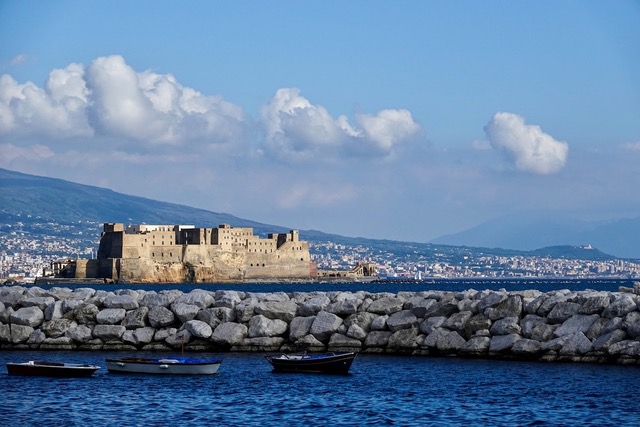
Not every great snorkeling experience is about marine life. In Italy, you can snorkel over ancient Roman ruins.
Two thousand years ago, Baiae was the destination for rich Romans to escape the city and relax by the seaside. Countless emperors and merchants flocked to Baiae’s shores every year, until tectonic activity forced this thriving city underwater.
Today, Baiae is an intact underwater city and one of the top highlights of snorkeling and diving in Italy. Observing these ruins is a breath-taking experience that brings history to life. There are Roman statues, a thermal spa, paved roads, and pillars dating back to the 1st century BC.
Corsica, France
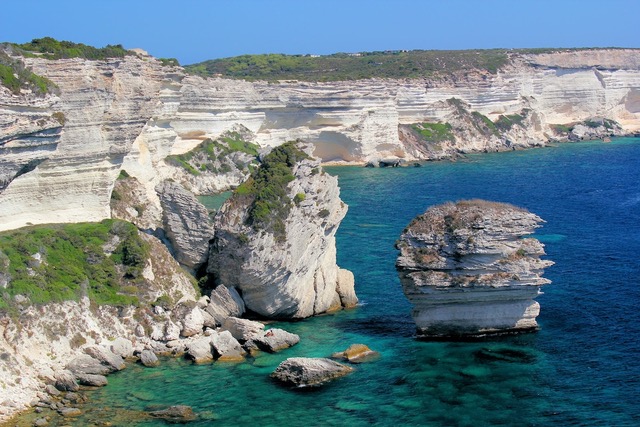
Corsica is renowned for its crystal-clear waters and shallow bays perfect for snorkeling with your kids.
This gorgeous island in the Mediterranean Sea boasts dramatic cliffs and white-sand beaches that hosts a wealth of accessible snorkeling spots. There are rich seagrass beds and rocky landscapes, plus small hidden coves dotted around the island. All of which host a diverse array of marine life, including huge schools of fish, octopi, moray eels, and starfish.
Corsica’s calm waters make it ideal not just for kids, but also for beginner snorkelers and those who want an easy time in the water. With water temperatures reaching up to 26 °C, plus water visibility of up to 30 meters, Corsica ticks the boxes for a laidback beach and snorkeling vacation.
Traun River, Austria
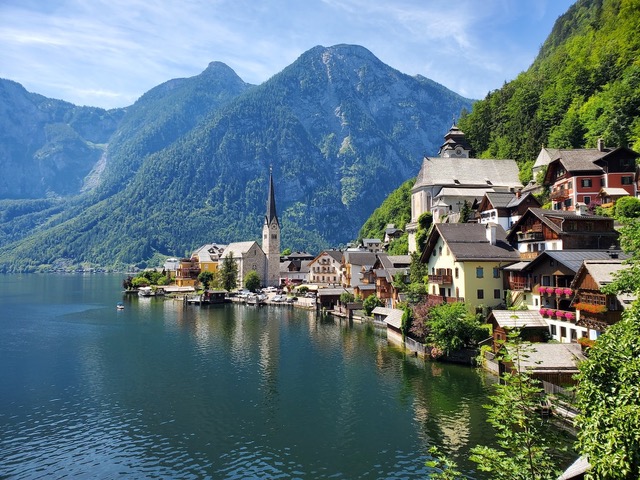
You might not think of Austria for snorkeling, but this land of iconic mountains and lush green landscapes has pristine lakes that attract divers and snorkelers every year. Away from the lakes, you can go snorkeling in spring-fed rivers that gleam in the sunshine.
Forget about floating on the surface when you go river snorkeling. At the Traun River in Upper Austria, river snorkeling involves rock jumping, canyoning, and some relaxed floating downstream. Along the way, you can explore interesting rock formations, underwater caves, and a waterfall, and meet freshwater fish life. This is also an excellent spot to go drift diving.
The Azores, Portugal
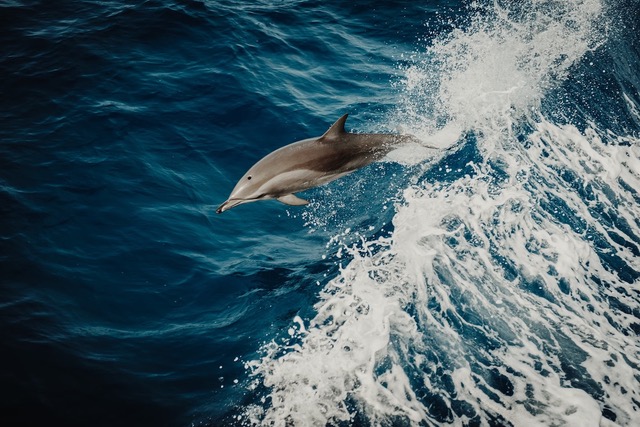
Sitting in the middle of the Atlantic Ocean and surrounded by endless blue waters, the Azores is a mecca for marine megafauna.
These famous islands host a remarkable amount of marine life, including more than 27 whale and dolphin species, mobula rays, and sharks. Snorkeling at the Azores is a great way to experience this wealth of life. You can swim with dolphins and snorkel among dozens of mobula rays and big pelagic fish.
And if you have a scuba certification, you can also go diving with mako and blue sharks. With water visibility reaching up to 60 meters, the Azores is incredible whichever way you choose to explore.
Kathryn Curzon, a conservationist and dive travel writer for SSI (Scuba Schools International), wrote this article.



